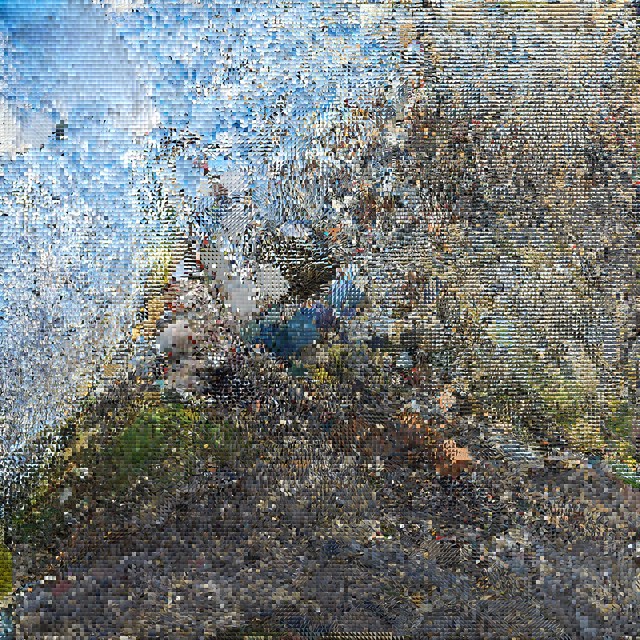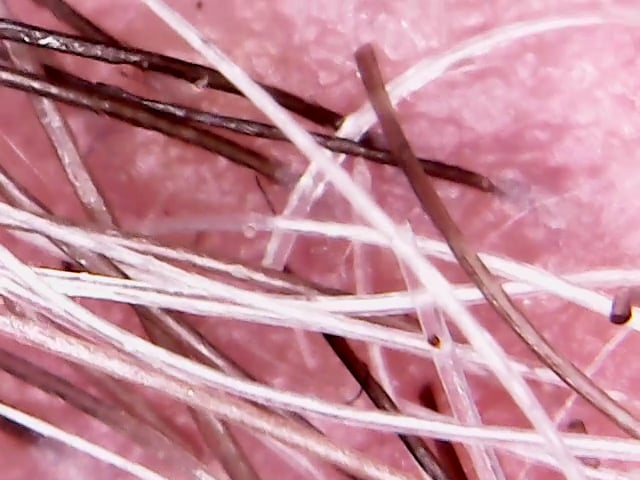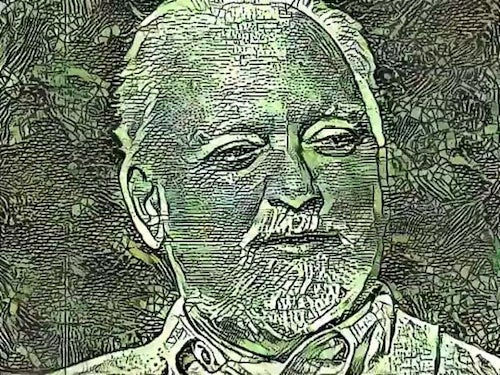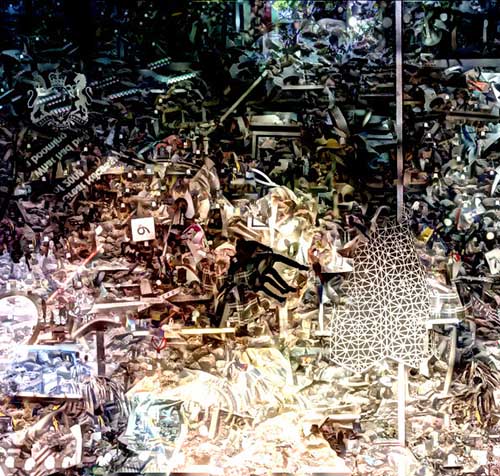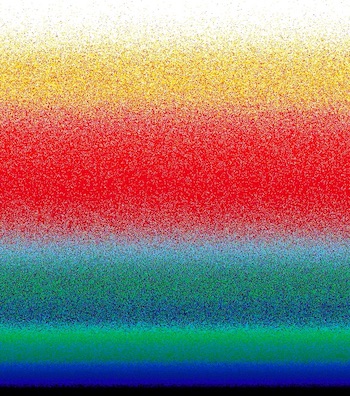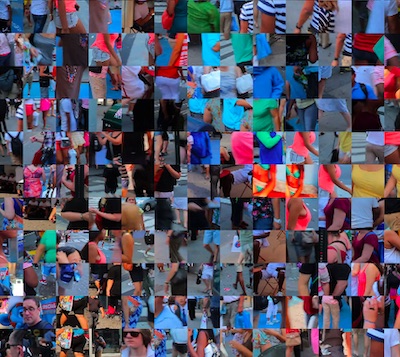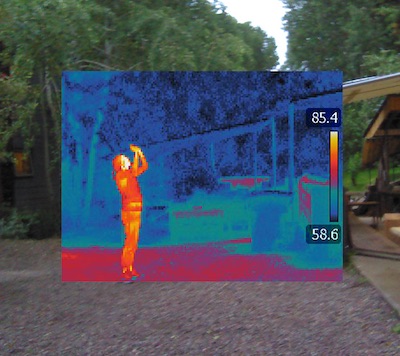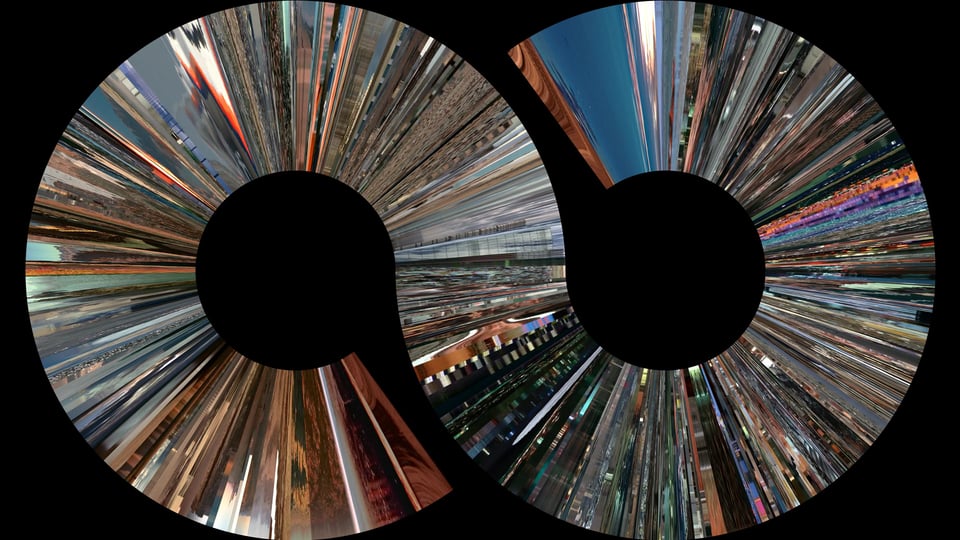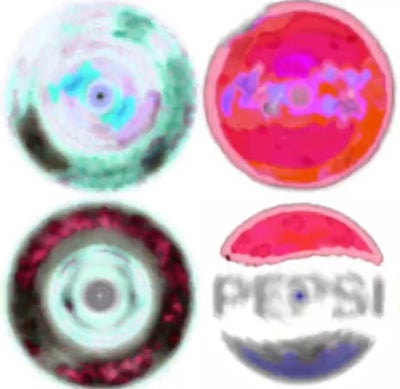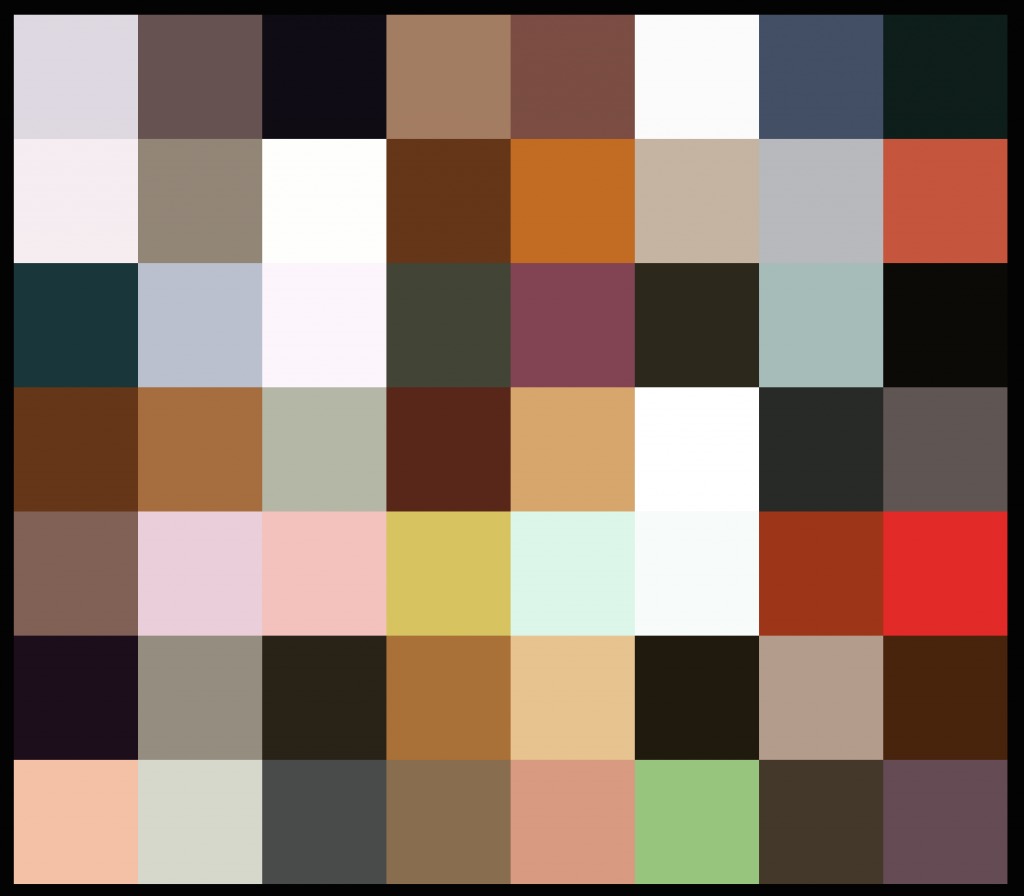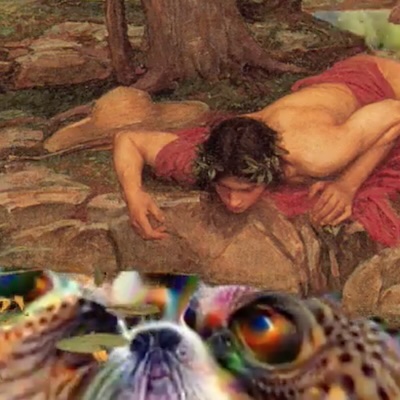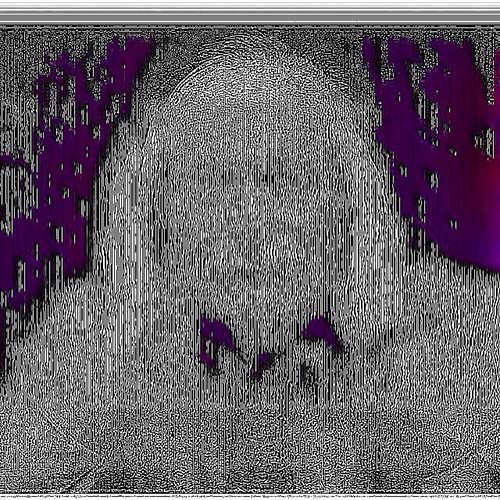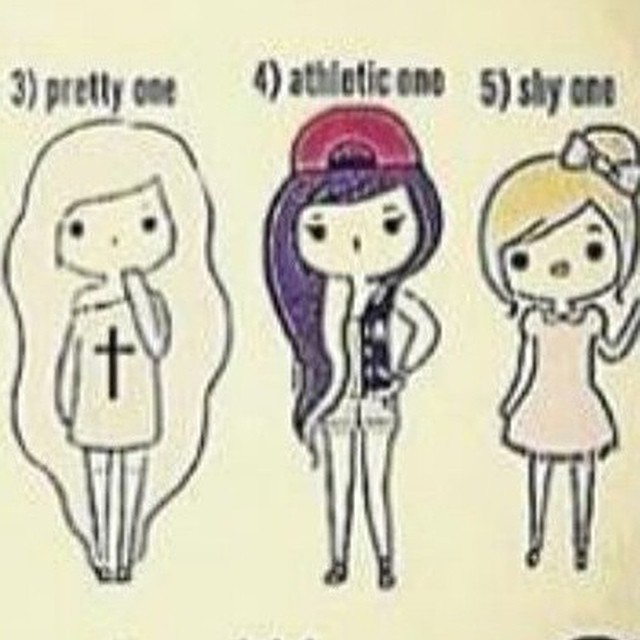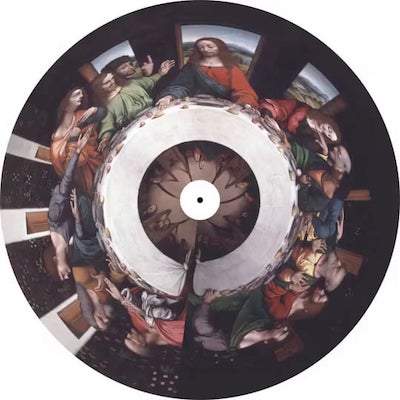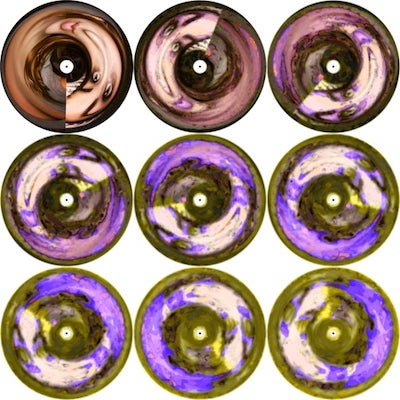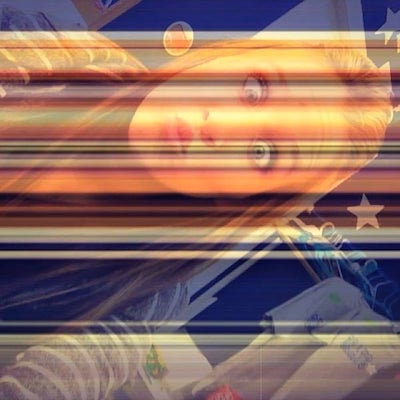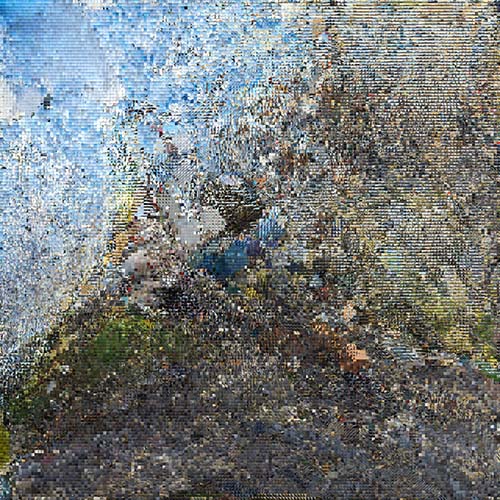t-SNE, or t-distributed Stochastic Neighbor Embedding, is is a machine learning algorithm for visualization where similar objects are modeled by nearby points and dissimilar objects are modeled by distant points. In other words, it finds similar looking things and clusters them together.
t-SNE was an entry-level demo during the Machine Learning Arts gold-rush because it could be relatively easily run on a laptop and produced a nice visual result. It also served to answer the question “what can we do with all these bloody images we’re generating?” We can stick them in a t-SNE grid.
One thing I found with t-SNE is it’s very good at dealing with single objects but gets muddy when there are many things in an image, as is the case with most normal photographs, so I started to chop photos into smaller squares, usually 6 or 12 pieces, and put those through the system. This seemed to give me more consistent clusters while the increase in density made for a more impressionistic canvas.
My main piece of t-SNE work from this period is A Portrait of Birmingham but there were of course many experiments which I keep in a Flickr album, many of which rework image collections from other works of mine. Click through for the Flickr pages to download large, explorable versions.

A new flag for the World (chopped up flags from the Fuck your Flags set)
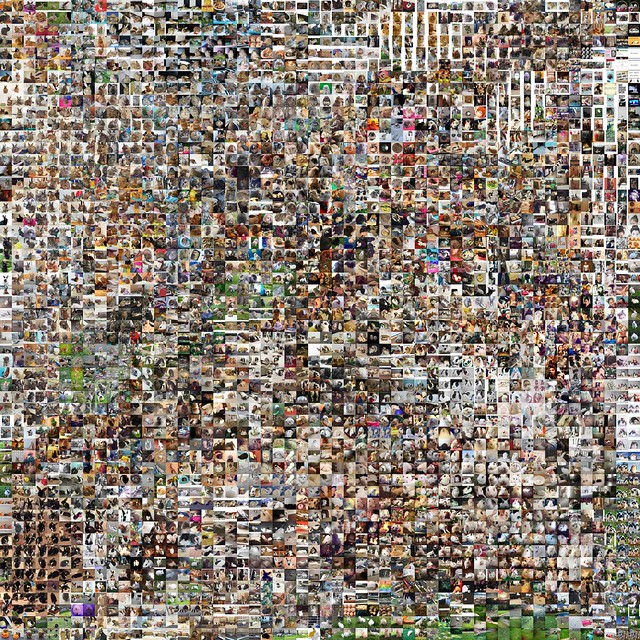
Bunnies (images of mostly rabbits batch-downloaded from Instagram)

More Bunnies (more images of mostly rabbits batch-downloaded from Instagram)

Images tagged Bunstagram batch-downloaded from Instagram

Images of centre pivot irrigation circles extracted from Gerco de Ruijter’s Crops

Sorting the IMG_2448 image set
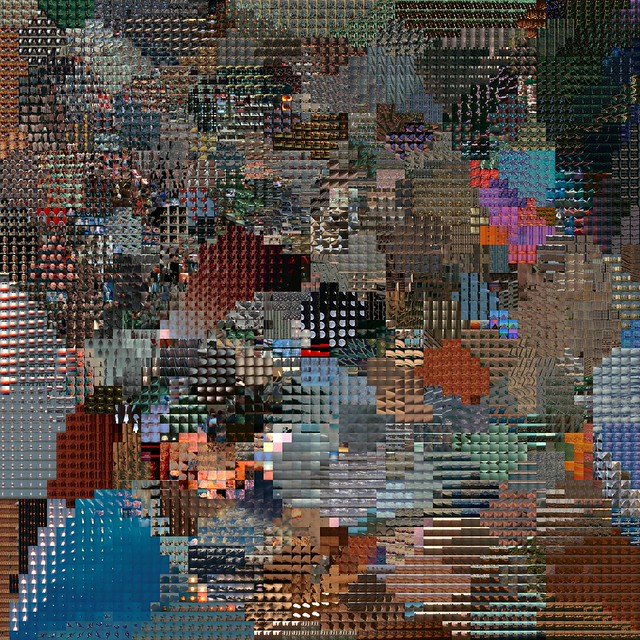
Sorting frames from the film KOYAANISQATSI
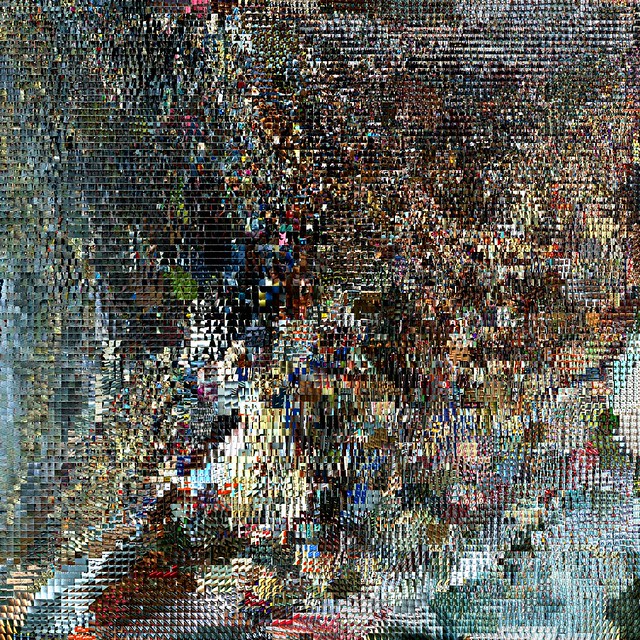
Sorting chopped up frames from a walkthrough video of the Shinsaibashi Mall in Japan.

Sorting chopped up frames from a walkthrough video of Times Square, NY
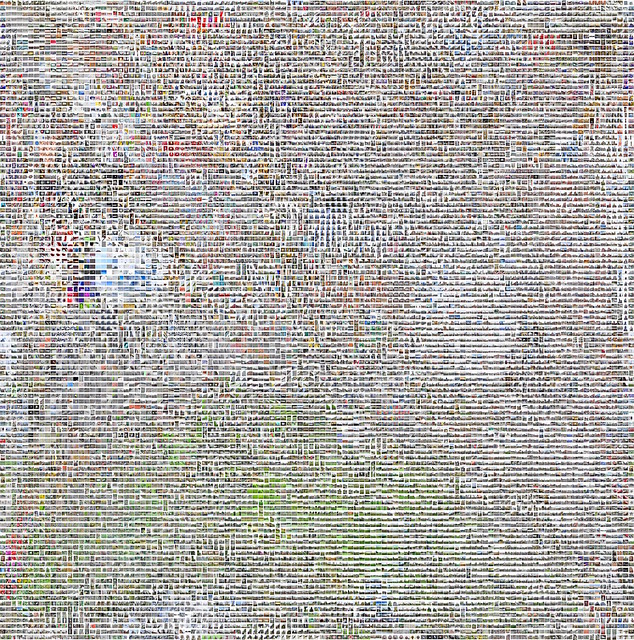
Images from the Trailblazers project.
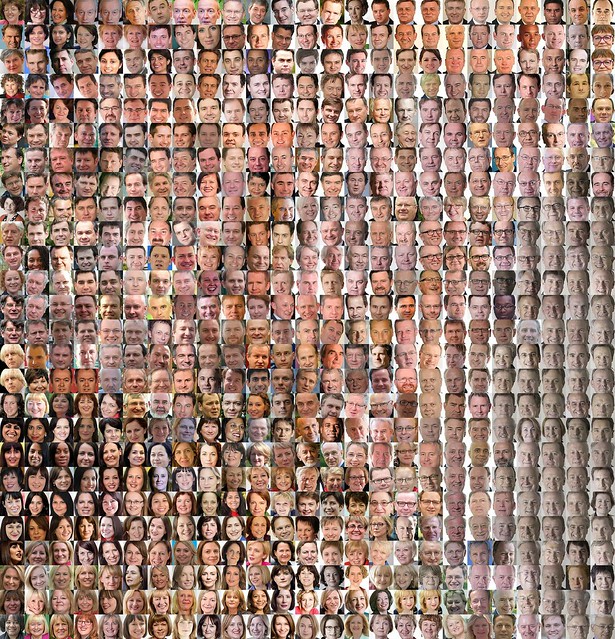
Using the 648 Members of Parliament image set
